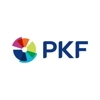

The PKF hospitality group recently held one of its 196+ spotlight events in Riyadh in recognition of the significant amount of projects that have been announced for Saudi Arabia, the largest sovereign state by landmass in the Middle East with a total of 2,150,000 km2 and 35 million inhabitants.
The majority of these projects, many of which touted to be worth well in excess of $100 billion each, form part of the very ambitious Saudi Vision 2030. This strategic road map is set to harness the strength and strategic position of the Kingdom whilst reducing its reliance on oil. The focus areas, on which $800b + will be spent, are tourism, health infrastructure and education. Of course the improvement of the country’s image is another desired outcome of this massive effort.
The initial push is to create product that attracts the local traveller, who currently doesn’t find enough reason to travel within his/her own country. The millions of pilgrims who come to Saudi Arabia to visit the holy sites are the next obvious market to be targeted before the discerning international traveller in other markets is lured to come and visit the Kingdom.
Names like NEOM, RED SEA PROJECT, QIDDIYA, DIRIYAH GATE are just some of these mega projects. There are of course voices that question how realistic these plans are and how they will be executed on time to meet the deadlines of Vision 2030 but the fact that many have already broken ground and are in the process of being started surprises some of those doubters. , Head of Africa also overseeing PKF’s Middle East operations: “Yes, I also think, that some may not be seen completed on time. It is a simple fact that know how, materials and in the end staff to run these places are not in high supply. Yet, some we’ll see completed on time no doubt.”
First on that list will be Trojena, the official host location of the Asian Winter Games 2029. Much coverage was received about this venue of choice with obvious connotations about heat and desert coming to mind. Yet the region does actually see snow in winter and is in general 10 degrees cooler than the rest of the country. Impressive architecture and technical advances will make the holding of the competitions in the various winter sport disciplines possible.
It is the mix of the projects makes them interesting. Whilst there is a definite focus on tourism The NEOM project, the size of Belgium, will, besides Trojena, feature a tech city, a seaside location and an international sea port, residential, retail and office space will complete this mega city between mountains and the Red Sea.
Sustainability ranks high in the KPIs that these projects set themselves. Most are the aspects of running them on a sustainable basis. The construction and the clearing of land, in cases also of indigenous people, is not necessarily based on the same principles. “It is heartening to see public-private partnerships that have a strong focus on ESG principles and that intend to build in a sustainable manner; source local materials as well as design and employ locals who will be trained and given ample opportunity to advance. These are fundamental building blocks in creating great and sustainable destinations”, says Heckscher.
So, whilst there is much controversy and even doubt about the development we are seeing right now, one thing is for sure, Saudi Arabia will surprise many and will be a changed country in the years to come. Way past 2030, many of the mega projects will be completed and house a transformed population. Whether this transformation will go without certain upsets and set backs remains to be seen.
“We will continue to add value to our clients’ projects and believe that there is a great need for the type of services we provide. Saudi Arabia currently represents the single biggest opportunity for hospitality and tourism, and that is set to continue for at least another five years”, says , Global CEO PKF hospitality group.